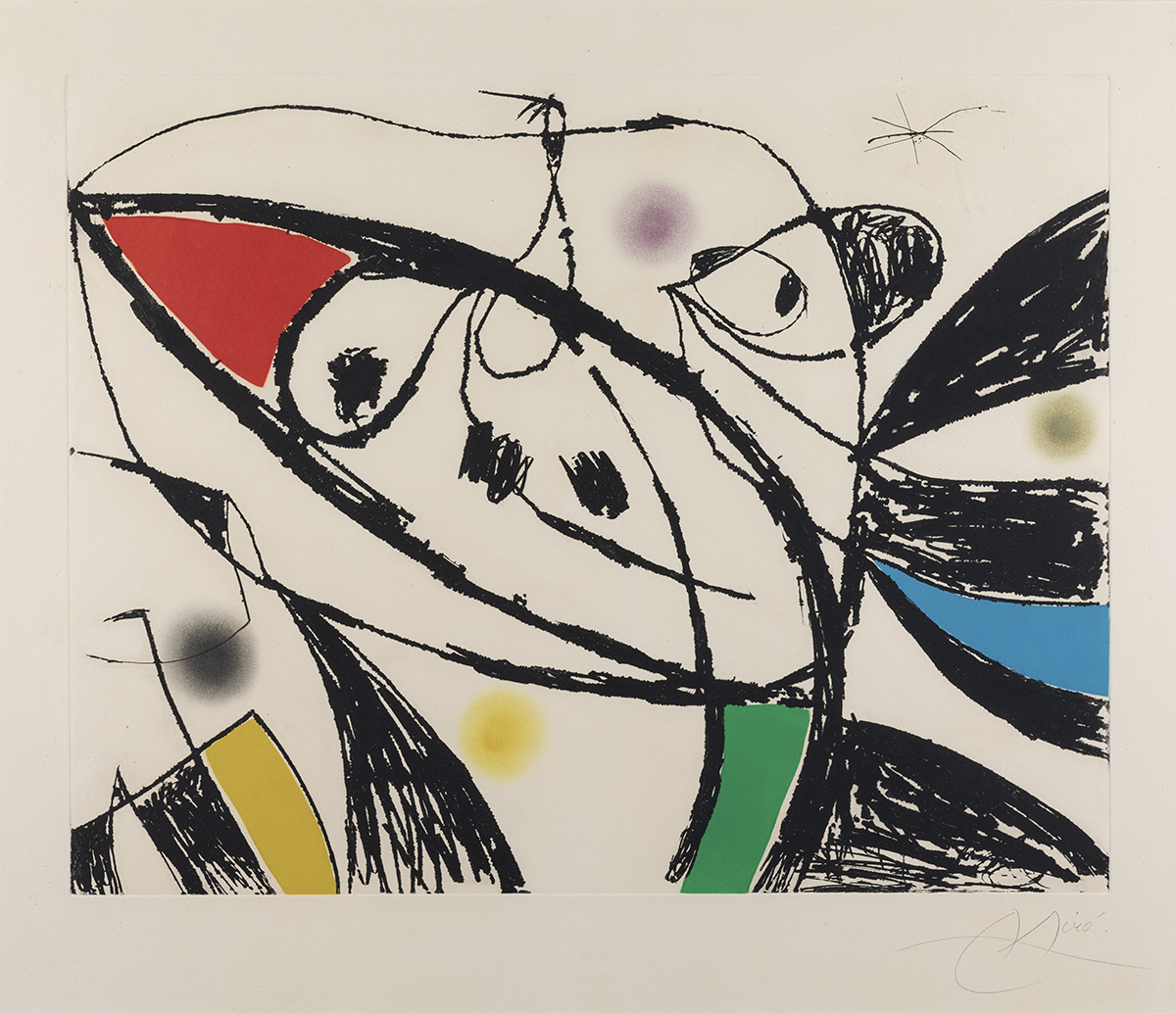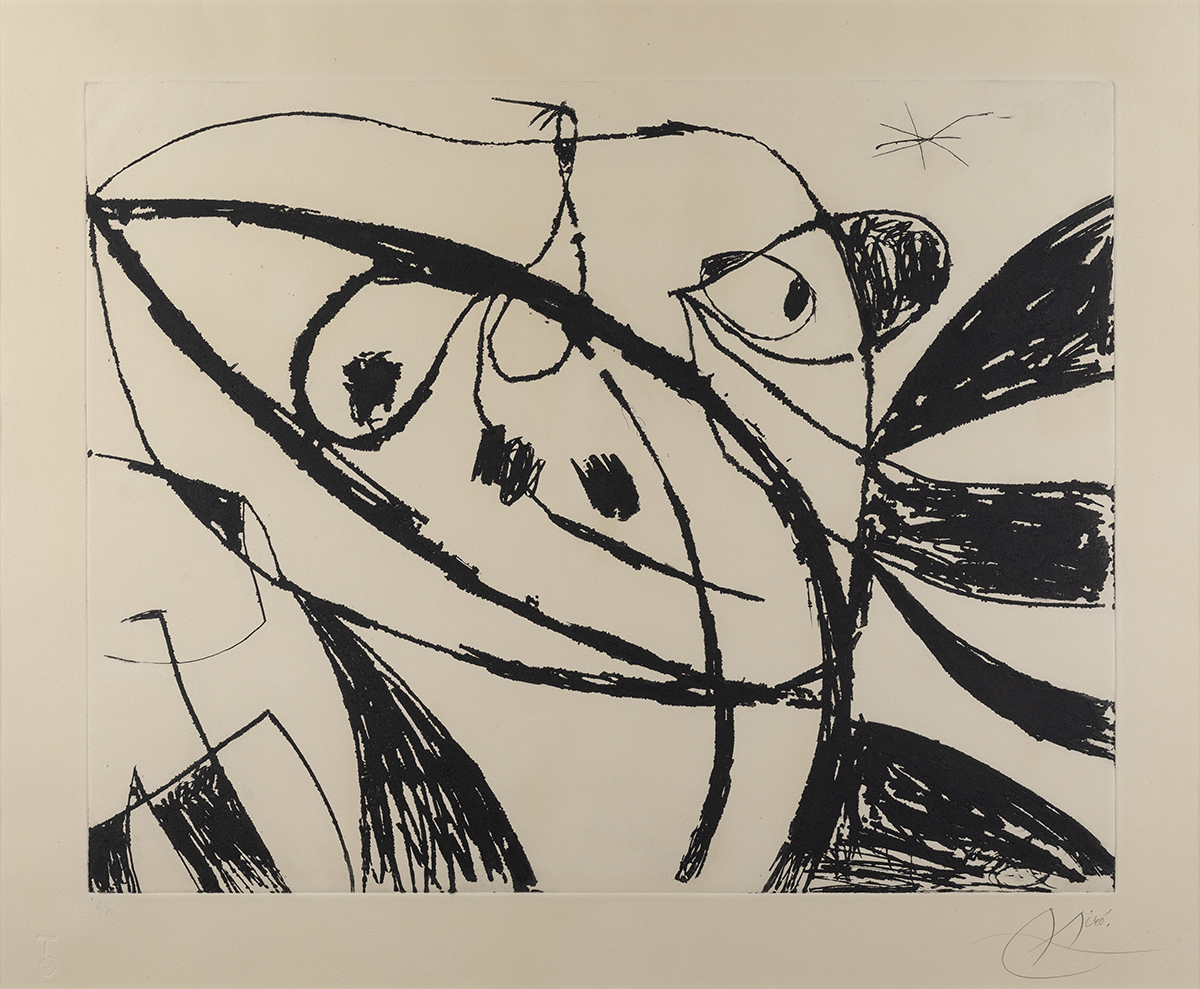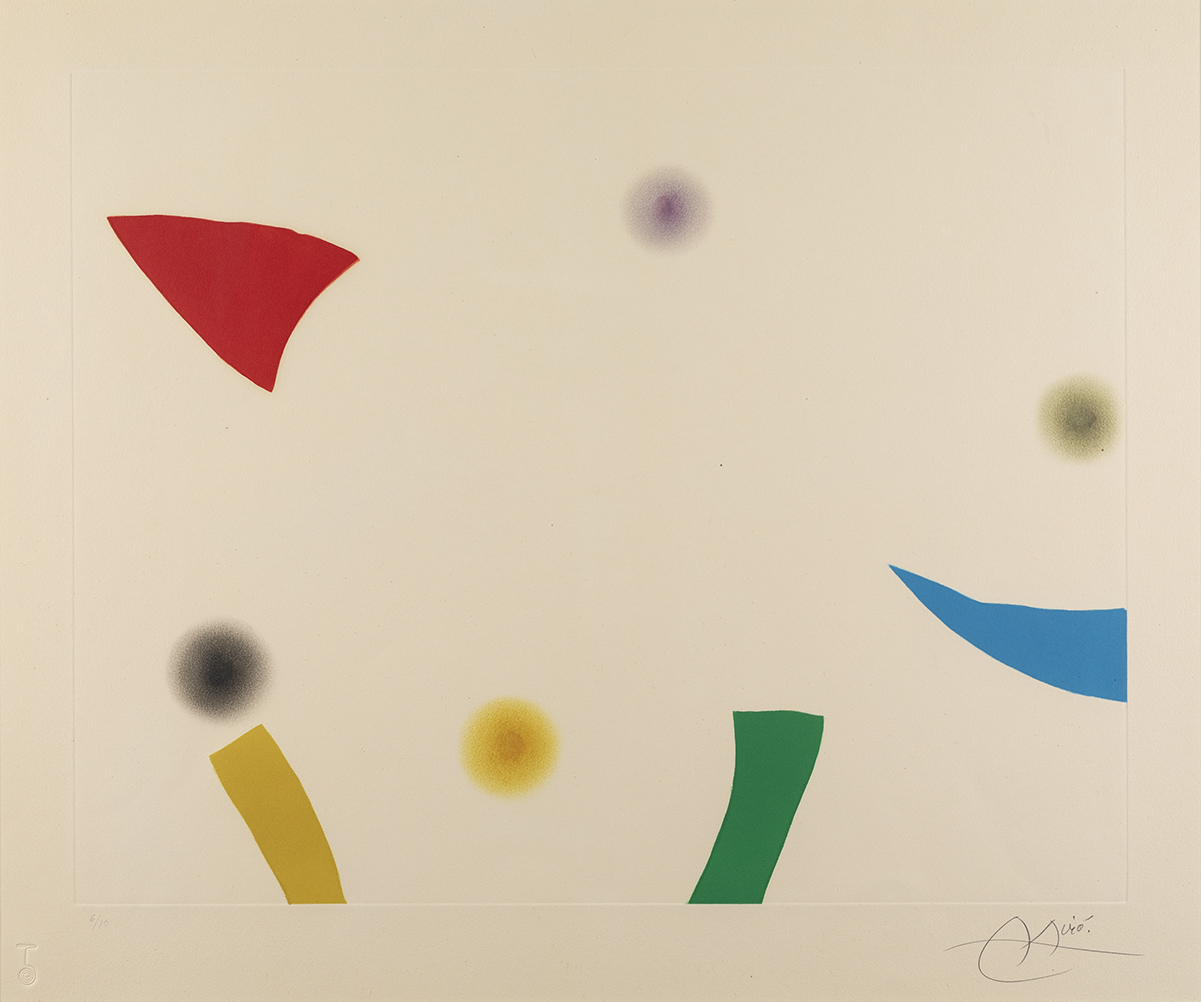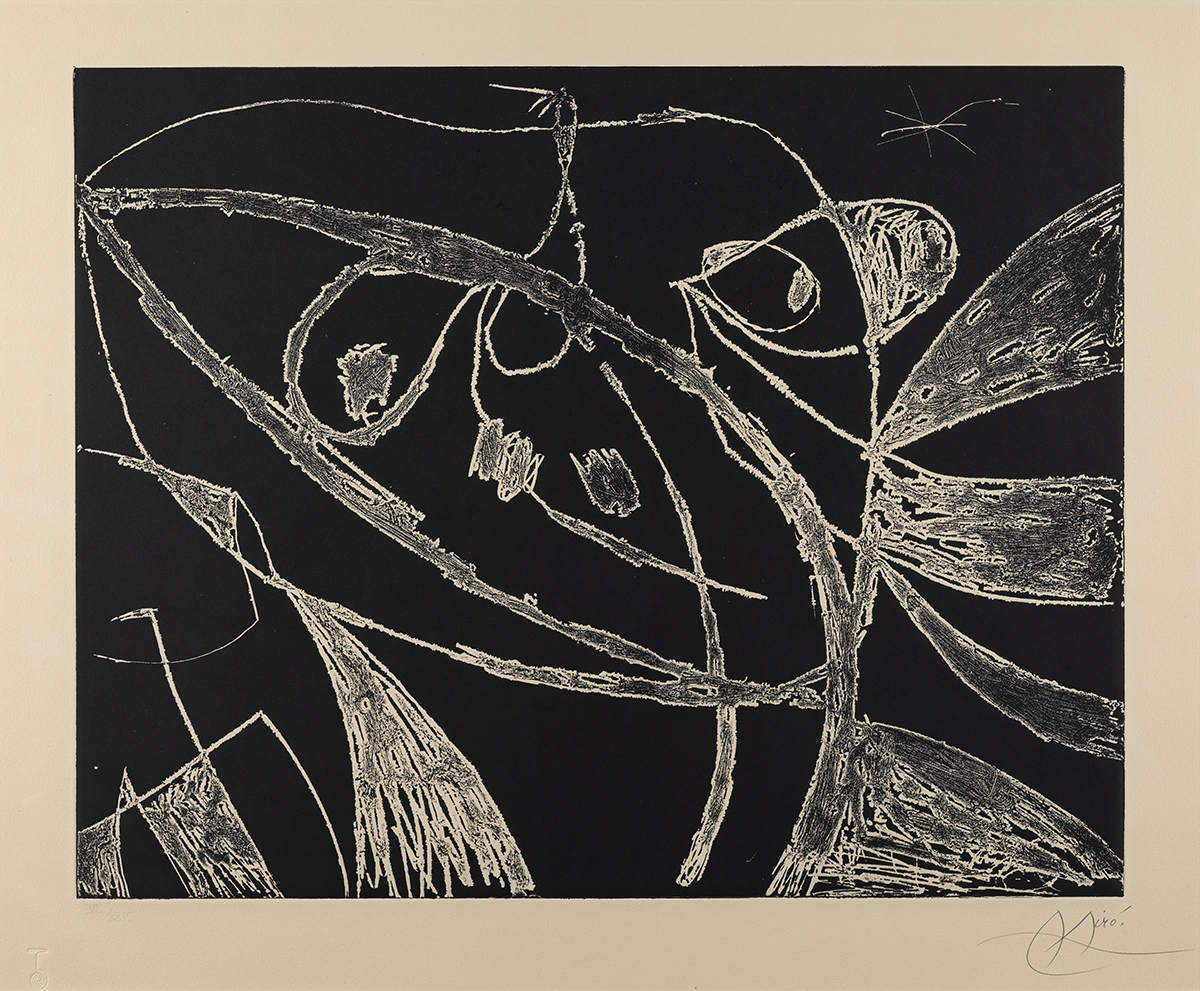Joan Miró
(Barcelona, 1893 – Palma de Mallorca, 1983)
Serie Mallorca (Mallorca Series)
1973
Serie Mallorca
engraving (aquatint and etching)
P05606 (70.3 x 86.1 cm) P05607 (72.5 x 89 cm) P05608 (70.3 x 86.9 cm) P05609 (72.5 x 89 cm)
Inv. no. P05606, P05607, P05608, P05609
BBVA Collection Spain
Joan Miró’s graphic work accrued significant weight within his overall production. The artist first started to work with printing in 1928 and from that moment onward it became a key medium for his visual experimentation, producing superb results. Throughout his career Miró pushed back the boundaries of printing with the goal of achieving a contemporary reformulation of traditional engraving. He used engraving techniques like or to create highly expressive prints depicting his celebrated cosmic worlds, where he combined the forceful gesturality of black marks with the animated weightlessness of colour.
All those features are visible in Serie Mallorca (Mallorca Series), one of the most outstanding suites in the artist’s career. Miró created it in 1973, the same year as his Barcelona Series. Both suites bring to the fore Miró’s connection with the two places: Barcelona, his hometown, and Mallorca, where he settled in 1940 and lived for long sojourns until the end of his days.
The Serie Mallorca (Mallorca Series) is somewhat exceptional in the sense that there are only ten complete portfolios of it in the whole world, one of them in the BBVA Collection. These four works belong to it. Their importance lies in the fact that Miró printed the colour and black states separately, as is customary in chalcography. However, by numbering and signing them individually Miró implied that he did not view them as mere steps in a process, but as illustrations in their own right, thus giving them the status of engraving. The whole is made up by thirty-six folios, nine printed in black and colour and nine only in black, nine printed exclusively in colour, and finally nine with the impression of the negative of the image.
The series is now regarded as one of Miró’s most outstanding due to the unique above-described conception and to its singular didactic purpose, namely, to independently show the various stages of the engraving process, thus allowing us to understand the complexity of the medium and to explore the artist’s personal abstract language in greater depth.












